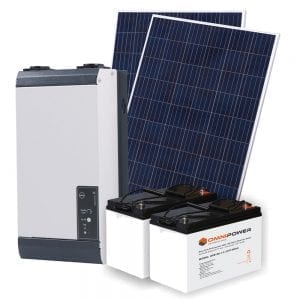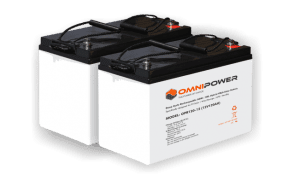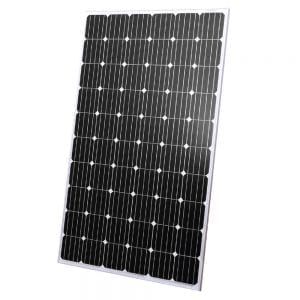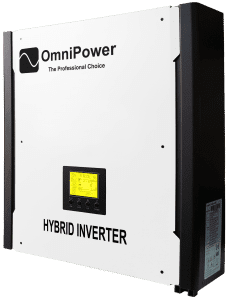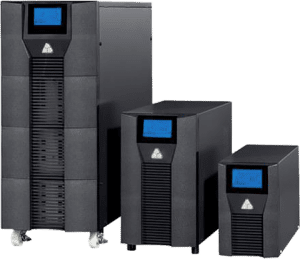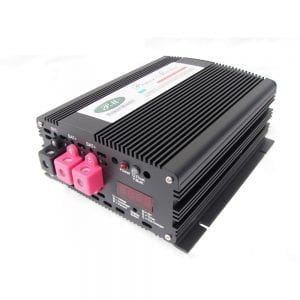What is the function of a UPS System?
An uninterruptible power supply (UPS) is a backup power supply that, in case of power failure or fluctuations, allows enough time for an orderly shutdown of the system or for standby generator to start up. UPS consists usually of a bank of batteries and power sensing and conditioning circuitry, and comes in two basic types: (1) Continuously-Online UPS provides steady and clean (spike free) AC power even when the mains power supply is available, and is recharged continuously by the mains supply. Also called true online backup. (2) Standby UPS automatically comes on when the mains supply fails or fluctuates inordinately. Its batteries are recharged when it is not in use.
Larger UPSs come with the software that allows for automatic, unattended shut down of the system in its proper sequence.
Safeguard your electronics with a true double conversion online UPS from Sinetech – we have been supplying affordable, feature-rich pure sine wave protection for your home and business for over 40 years!
VA Rating:
The UPS VA Rating you require will depend on the load current of the equipment you intend plugging into the UPS.
To calculate the VA Rating : multiply the Amps of the equipment (normally indicated on a lable on the rear of the equipment or in the technical manual or ask the supplier) you will use with the mains voltage you require and divide by the Power Factor (PF) of the equipment.
Sizing a UPS System:
For example:
Computer equipment requires : 2 Amps (current)
Mains voltage used : 230VAC (AC voltage)
Power factor of computer equipment : 0.6 (typical for computer equipment)
2A x 230V = 460W / 0.6 PF = 766 VA
You will require a 800VA but to cater for your future expansions and to not stress the UPS by running on 100% load all the time, you always add 20-25% capacity. Therefore a 1000VA UPS (1KVA) should be used in this case.
When choosing a UPS system it is a good idea to also plan ahead to cater for expansion so that your investment in a UPS does not outgrow your future needs.
If several computers or pieces of equipment are involved, add all the Amps together and do the calculation as shown. Please contact us if you need any assistance. We will gladly calculate the system for you if you provide all the relevant details.
Backup Time:
The backup time is proportional to the load that is connected to the UPS. The more the load, the less the backup time. You can have backup time as little as 5 minutes which will enable you to shutdown the equipment connected to the UPS before the power fails; or many hours of backup time so you can keep your equipment running until mains power returns.
Longer backup time and higher protection levels cost more than short backup times and lower protection levels.
A UPS system is often used to provide uninterrupted power after mains fail until a generator starts up.
UPS Topologies and Protection Offered:
The level of protection you need will determine which of the following topologies is most suited to your needs.The main UPS topologies are:
Off-Line Squarewave and Modified Sinewave and Standby
Your computer is running at standard mains via a small limited AC Filter under normal circumstances (some systems do not have filters at all). After a power failure this type of UPS system switches, via a small relay, over to a simple inverter to provide power to allow you to save your open files and shutdown your computer.
The backup time is normally short and will depend on the VA rating (see definition above) of the UPS and the amount of power your equipment draws from it. This type of UPS will give you very limited or no protection against power surges, spikes and sags. Typical backup time = 5 – 10 Minutes maximum. The backup time cannot be extended.
This type of UPS System is aimed at the SOHO & small business market and is mainly used when you have repeated, short power failures but a reasonably good mains supply. This type of UPS system is not recommended for critical applications or areas where there is bad or high fluctuating mains supply.
Cost: Very Low
Power Level: 650VA and 1200VA
Protection level: Approximately 0 – 10%
Line Interactive Stepped Squarewave
Your computer is running at standard mains via a small AC Filter under normal circumstances. After a power failure this type of UPS system switches, via a small relay, over to a simple inverter to provide power to allow you to save your open files and shutdown your computer. The system also normally includes a limited AVR (Automatic voltage regulator) which controls incoming mains fluctuations to a small degree.
The backup time is normally short and will depend on the VA rating (see definition above) of the UPS and the amount of power your equipment draws from it. This type of UPS will give you very limited protection against power surges, spikes and sags. Typical backup time = 5 – 10 Minutes maximum. The backup time cannot be extended. Our range is intelligent (RS232) but the automatic shutdown software and serial cable are not supplied as this is seldom required.
This type of UPS System is aimed at the SOHO & small business market and is mainly used when you often experience short power failures but a have a reasonably good mains supply. This type of UPS system is not recommended for critical applications.
Cost: Low
Power level: from 300VA to 1200VA
Protection level: Approximately 0 – 20%
Line Interactive Pure Sinewave
This type of UPS system will provide backup to enable you to save your work and shutdown your computer after a power failure and is also designed to regulate the output voltage and prevent, to a large degree, any spike, sags and blackouts from reaching your sensitive equipment (ranging from computers and telecommunications systems to computerised instruments).
Once again, the backup time will depend on the VA rating of the UPS (see VA rating definition above) and the amount of power your equipment draws from it. Typical backup time = 5 – 10 Minutes. With the relevant model, the backup time can be extended to several hours. Our range is intelligent (RS232) and comes with automatic shutdown software and serial cable.
Recommended for semi-critical applications and small to medium sized businesses. Only recommended for semi-critical applications if the UPS output is pure sinewave (as line interactive UPS systems are also available in stepped squarewave or modified sinewave).
Cost: Medium
Power level: from 700VA to 3200VA
Protection level: Approximately 20 – 60%
Single Conversion Triport CVT Based Sinewave
Sometimes misrepresented as a Double Conversion Online system
This type of UPS system will provide protection and backup on power failure for some applications. Your computer system is always running via a constant voltage transformer which basically regulates the output voltage and also filters, to a large degree, spikes, sags, etc.
The single conversion and sinewave output provides a reasonable sinewave and in most cases, adequate protection for computers and any some other load. It is sometimes less efficient and older technology.
Typical backup time = 5 – 10 Minutes. This unit can be intelligent (RS232) and sometimes automatic shutdown software is available.
This type of UPS System is aimed standard computer equipment where total protection is not necessary.
Cost: Medium high
Power level: from 1KVA to 10KVA
Protection level: 60-80%
Double Conversion Online Sinewave
This type of UPS system will provide total protection and backup on power failure for critical applications. Your computer system is always running on electronically produced power and it is not directly connected to the utility supply. The double conversion, double isolation and the pure sinewave form output ensure the cleanest, most compatible AC output for computers and any other critical load.
Typical backup time = 5 – 10 Minutes. Plug-in external battery packs are available to extend the backup time to several hours. This unit is intelligent (RS232) and comes with automatic shutdown software and serial cable.
This type of UPS System is aimed at the professional, medical/industrial and upper business market and is recommended when you have a very dirty, noisy & unreliable mains supply. It is also recommended for all critical Computer and medical applications. This type of system has the highest protection level available.
Cost: High
Power level: from 700VA to 100KVA (or several MVA with imported systems which can be paralleled)
Protection level: 100%
In our very developed electronic environment where computers and communication systems are vital for companies to function, it is very important that some form of power / lightning protection device be installed. We recommend you look at purchasing the best power / lightning protection equipment you can afford if your company is dependent on its computer and communication systems.
Parallel Systems:
A parallel system comprises of multiple UPS systems or UPS modules (e.g. 19″rack mount modules). These are installed so that they operate in parallel to support a common critical load. There are two main reasons for selecting this type of system. The first would be to increase the UPS capacity, which enables the system to power a larger load than possible with a single module. The second reason is to increase the system reliability by introducing modular redundancy.
Smaller systems which can be paralleled are normally only available overseas and are very expensive to import. Larger systems, from approximately 10KVA (usually imported) are available locally.
UPS Monitoring and Shutdown Software:
This software is available for many UPS systems. This will enable you to monitor your UPS remotely and in the event of a power failure the software can shutdown the computers connected to the system so that you don’t lose any data.
Some of our smaller UPS systems are supplied with free shutdown software. With larger UPS systems, software is an additional item which has to be purchased. In some cases an SNMP card (simple network management protocol) is also available on request.
UPS Environment and Battery Life Span:
To protect your UPS and its batteries, the system should be placed in the correct environment. UPS systems are not designed to be placed outside where they are exposed to the elements. They should preferably be placed in an air conditioned room but this is not necessary if the environment temperature does not exceed 24 – 26 degrees celcius. The hotter the environment, the shorter the life span of the batteries.If possible, humidity should also be kept below 60%.
Remember a UPS system can be more complex than the computer that it is driving. UPS batteries are normally either sealed maintenance free, or semi-sealed maintenance free batteries and have a life span of 3 – 5 years. Long life batteries, 8 -10 years, are also available on request. At the end of the battery life span, UPS batteries must be replaced.
Preventative Maintenance Contracts:
UPS systems, especially larger systems, require maintenance. We offer countrywide service agreements, ranging from basic maintenance to full service contracts. Please enquire. These services help to extend the UPS and battery life span.

